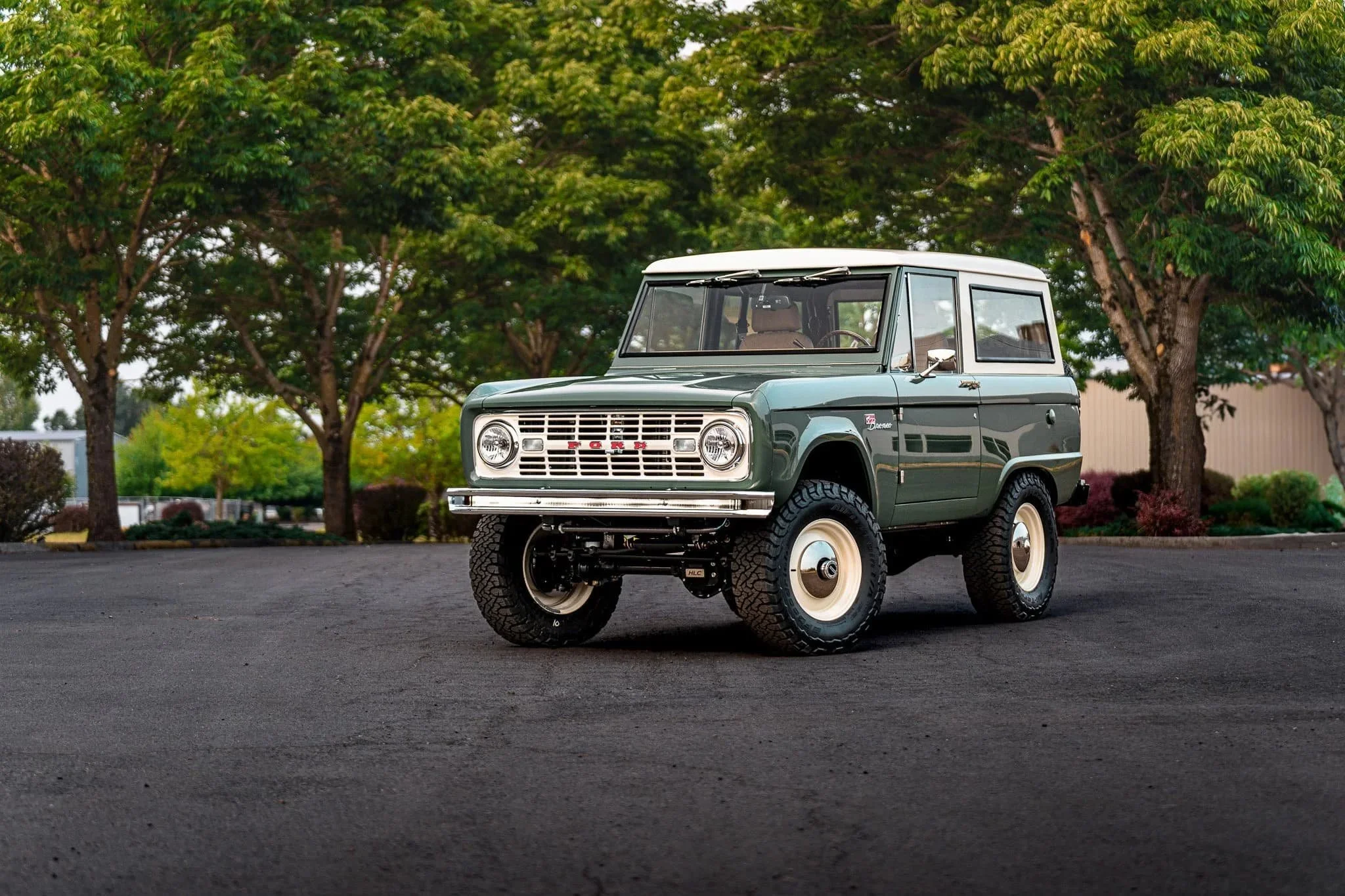1966 Ford Bronco Specs & Restoration Guide: A Timeless Classic
Welcome to the definitive guide to the 1966 Ford Bronco, the trailblazing vehicle that started a revolution in the off-road world. At HighLine Classics, we live and breathe these iconic machines, and we’re here to share our passion and expertise with you. Whether you’re a seasoned collector or a newcomer to the classic Bronco scene, this guide will provide you with everything you need to know about the 1966 model year.
The Dawn of a Legend: The 1966 Ford Bronco
The mid-1960s was a time of automotive innovation, and Ford was at the forefront. Recognizing a gap in the market for a small, versatile 4x4, Ford introduced the Bronco in 1966. It was designed to be an “all-purpose vehicle,” equally at home on the farm, on the trail, or on the town. This was a vehicle that could do it all, and it quickly captured the hearts of Americans.
The first-generation Bronco was a masterpiece of engineering and design. It featured a unique chassis, not shared with any other Ford product, which gave it exceptional off road capabilities. Its compact size, with a 92-inch wheelbase, made it incredibly agile and maneuverable, able to navigate tight trails and obstacles with ease. The coil spring front suspension was a game-changer, providing a much smoother ride than its leaf-sprung competitors. This combination of ruggedness and comfort set the Bronco apart from the competition and cemented its place in automotive history. What the Restoration Process Looks Like
1966 Ford Bronco Specifications
Understanding the original specifications of the 1966 Bronco is crucial for any restoration project. Here’s a breakdown of the key technical details:
Engine Options
170-cubic-inch Inline-Six: The standard engine for the 1966 Bronco was a 170- cubic-inch inline-six, producing 105 horsepower. While not a powerhouse by today’s standards, it was a reliable and economical engine that was more than capable of handling the demands of off-road driving.
289-cubic-inch V8: For those who wanted more power, Ford offered a 289-cubic inch V8 as an option. This engine, borrowed from the Mustang, produced 200 horsepower and gave the Bronco a significant performance boost.
Transmission
The only transmission available for the 1966 Bronco was a column-shifted three-speed manual. This simple and robust transmission was a perfect match for the Bronco’s utilitarian nature.
Axles and Suspension
The 1966 Bronco was equipped with a Dana 30 front axle and a Ford 9-inch rear axle. The front suspension featured coil springs and radius arms, a design that provided both a smooth ride and excellent articulation. The rear suspension used traditional leaf springs.
Body Styles
The 1966 Bronco was available in three body styles:
Roadster: The most basic model, with no doors or roof. It was a true open-air vehicle, perfect for those who wanted the ultimate off-road experience.
Pickup: A two-door pickup with a small bed. This was a practical and versatile option for those who needed to haul gear.
Wagon: The most popular model, with a full-length roof and doors. It was a more traditional SUV, offering protection from the elements and more interior space.
Restoring a 1966 Ford Bronco: A Labor of Love
Restoring a classic Bronco is a rewarding experience, but it’s not without its challenges. Here are some of the key areas to focus on when restoring a 1966 Bronco:
Rust
Like any vehicle from this era, the 1966 Bronco is prone to rust. The most common areas for rust are the floors, rocker panels, and rear quarter panels. It’s important to thoroughly inspect the vehicle for rust and to address any issues before they become a major problem.
Electrical System
The electrical system in a 1966 Bronco is relatively simple, but it can be a source of problems. It’s a good idea to inspect the wiring for any damage or corrosion and to replace any faulty components. Upgrading to a modern wiring harness is a popular and worthwhile modification.
Interior
The interior of a 1966 Bronco is spartan by today’s standards, but it’s an important part of the vehicle’s character. When restoring the interior, you have the option of either restoring it to its original condition or upgrading to more modern components. We specialize in creating custom interiors that combine classic style with modern comfort and convenience.
Drivetrain
The drivetrain is the heart of the Bronco, and it’s important to make sure that it’s in good working order. Whether you’re rebuilding the original engine and transmission or upgrading to a modern powertrain, it’s important to use high-quality parts and to have the work done by a qualified professional. A popular upgrade is to swap in a modern Ford Coyote V8 engine, which provides a significant increase in power and reliability. You can learn more about our custom builds here.
The HighLine Classics Difference
At HighLine Classics, we’re more than just a restoration shop. We’re a team of passionate enthusiasts who are dedicated to preserving the legacy of the Ford Bronco. We offer a wide range of services, from basic maintenance to full frame-off restorations. We also have a selection of pre-owned Broncos for sale, so you can find the perfect vehicle to start your own Bronco adventure.
If you’re thinking about restoring a 1966 Ford Bronco, we encourage you to contact us. We’d be happy to answer any questions you have and to help you create the Bronco of your dreams.


